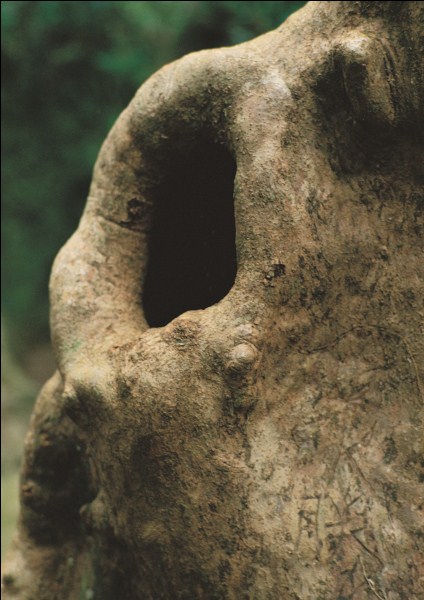Dear Toby,
Many of the daily challenges we face require dealing with a certain degree of fear, and generating an appropriate degree of courage. The article that I have written below tries to place fear and courage in a particular framework which will help people think about how they can start dealing with fear and consciously use courage to live a more full and fulfilling life, less dominated by fear.
I hope you enjoy it!
Yours in the spirit of daily courage,
Toby
 Recognizing Three Types of Fear, Meditating on three Types of Courage
Recognizing Three Types of Fear, Meditating on three Types of Courage
The three types of fear are:
- Instinctive or biological fear – This is activated when we, or someone we care for are in actual physical danger of some sort and that impels us to act decisively. The difficulty for many of us in this day and age is that our biological fears get activated in situations where there is not actually any manifest physical danger, and we find ourself in fight or flight mode when we don’t need to be. So a major part of dealing with this fear is to allow it to affect us only when appropriate and necessary!
- Psychological fear – This type of fear occurs when our ego or self image feels threatened either by what someone else says about us (for example a deliberate or non-deliberate verbal insult), or when we have thought or emotion that our self image deems inappropriate or bad, and so we then try and “get rid” of that bad thought or emotion, or otherwise repress it out of fear.
- Existential fear – This to use the definition of existential psychology is the fear that we all face arising from “Being in the face of non-being”. That is to say it is the fear that we experience as a tiny unity of temporary human life in the face of our inevitable death, or movement into non-being. This is a fear that all of us faces and experiences.
Accordingly there are three types of courage that we might think of as qualities that help us to deal with the three types of fear:
- Instinctive or biological courage – This type of courage we are called to act upon in situations of actual danger to our life or wellbeing, or the life/wellbeing of someone else. It is a courage that we have to activate generally only occasionally, but it is important that it is present and ready for these occasional purposes.
- Psychological courage – This type of courage enables us to appropriately repel the threats to our self image that may come from the negativity of others outside of us, but perhaps more importantly it enables us to appropriately acknowledge the difficult emotions and thoughts that haunt our own mind and make a firm decision not to run from these inner fears, or to distract ourself from them, but face up to them and learn how to deal with them appropriately. One of the best ways we can set ourself up for happiness and wellbeing in life is to keep ourself as clear as possible of repressed or “shadow” fears in our unconscious mind that block the flow of energy in our being and make us feel unworthy of genuine and deeply felt enjoyment. Another point here is that quite a lot of our psychological fear is actually our biological/instinctive fears projecting themselves onto our everyday situation, so it is actually fear number 1 projecting itself onto fear number 2. If we can learn to recognize this, then this can also really help us deal in a more relaxed and down to earth manner with our psychological fears.
- Existential courage – The third type of courage is existential courage, which is essentially the courage to live a full and creative life even in full knowledge of the fact that eventually we will die and (from the perspective of the small-self of this life) lose everything. Existential courage encourages us to really think about what is most important in our lives, and make sure that each day we are expressing our core values, working toward goals that really mean something to us, and appreciating the things in our life that we really hold dear. To have existential courage means to live life in the present moment fully and vibrantly for as long as it lasts, and then hopefully to die without regrets!
A meditative perspective on the three types of courage:
As meditators on courage then we are trying to:
- Be mindful of our instinctive courage, calling upon it when necessary and control our biological fear when genuine threats are present.
- Face our psychological fears with courage, acknowledging and dealing appropriately with thoughts and emotions that appear to threaten the wellbeing of our self-image.
- Consciously leverage on our existential courage to live a full and meaningful human life.
A final point here is that as we meditate we also start to have experiences that temporarily transcend our existential fear as our self-sense expands beyond our ego. When in meditation we start to develop a sense of ourself as being part of a Universal being or consciousness that did not start with our biological birth and will not end with our biological death, we do start to genuinely transcend our natural fear of death. However, in my experience, even after a part of our awareness does transcend our small self, and identify with its deeper Universal nature, there is still a substantial part of us that still has to work with our life as an individual human, and still has to leverage substantially on the three types of courage in order to deal with the three types of fear.
© Toby Ouvry 2012, you are welcome to use or share this article, but please cite Toby as the source and include reference to his website www.tobyouvry.com
 The Key to Dealing with Stress, the Challenge of Dealing with Anxiety
The Key to Dealing with Stress, the Challenge of Dealing with Anxiety
 The nature purpose of training in concentration
The nature purpose of training in concentration Resting in Safety, Thriving on Risk
Resting in Safety, Thriving on Risk The Tibetan tantras invite us to transform our attachment into a mind of “great bliss”, and in doing so take one of the main causes of our bondage to delusions and change it into a cause of enlightenment. What is a mind of “great bliss” sounds pretty exciting and pleasurable right? To experience an authentic state of great bliss is to experience the primal energy of divine creativity emerging from the emptiness of our causal, or very subtle, formless awareness. Another way of putting it is to say that the mind of great bliss is the cosmic version of our everyday mind of caring, loving and being compassionate.
The Tibetan tantras invite us to transform our attachment into a mind of “great bliss”, and in doing so take one of the main causes of our bondage to delusions and change it into a cause of enlightenment. What is a mind of “great bliss” sounds pretty exciting and pleasurable right? To experience an authentic state of great bliss is to experience the primal energy of divine creativity emerging from the emptiness of our causal, or very subtle, formless awareness. Another way of putting it is to say that the mind of great bliss is the cosmic version of our everyday mind of caring, loving and being compassionate.


